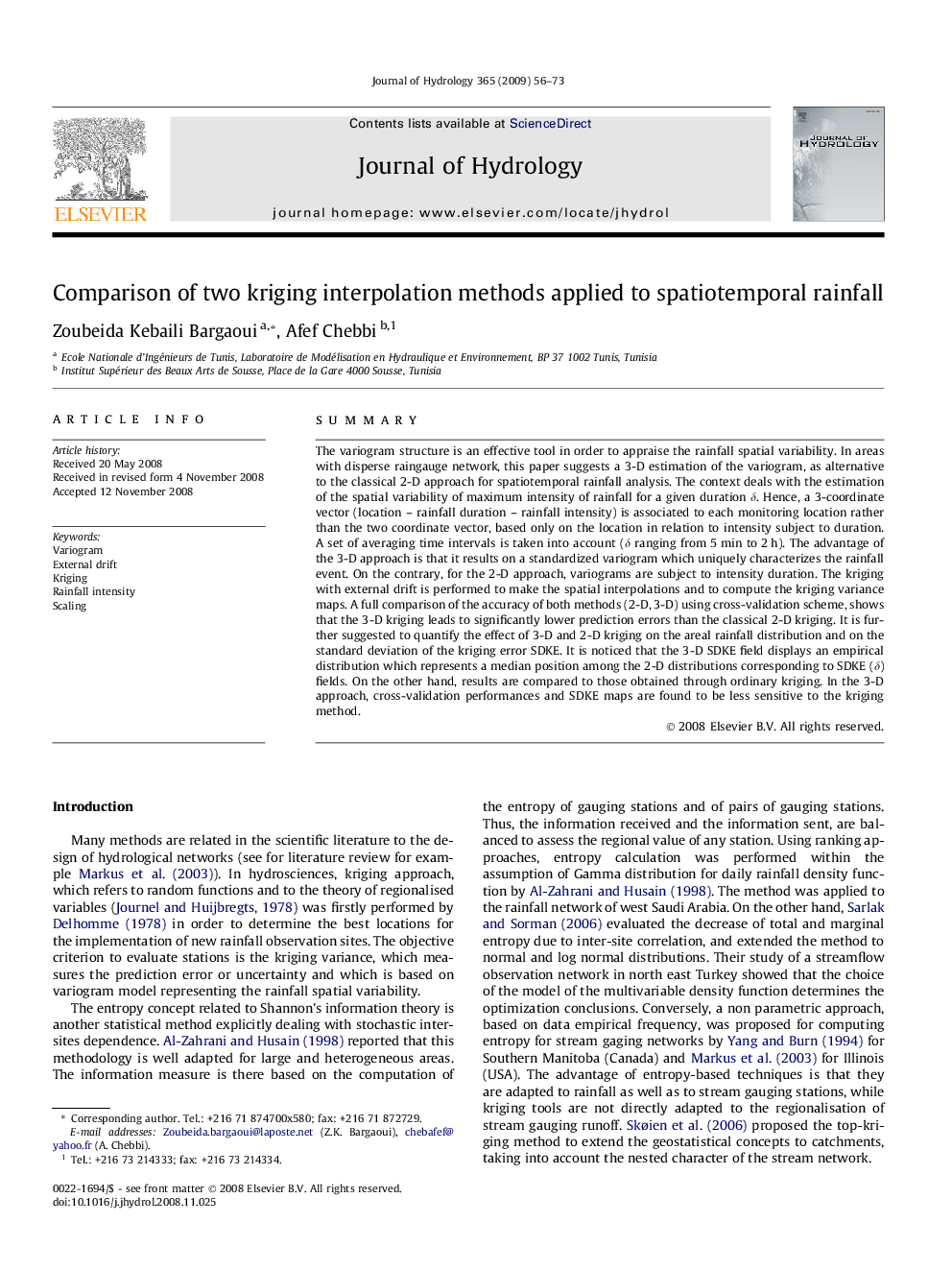| Article ID | Journal | Published Year | Pages | File Type |
|---|---|---|---|---|
| 4579097 | Journal of Hydrology | 2009 | 18 Pages |
SummaryThe variogram structure is an effective tool in order to appraise the rainfall spatial variability. In areas with disperse raingauge network, this paper suggests a 3-D estimation of the variogram, as alternative to the classical 2-D approach for spatiotemporal rainfall analysis. The context deals with the estimation of the spatial variability of maximum intensity of rainfall for a given duration δ. Hence, a 3-coordinate vector (location – rainfall duration – rainfall intensity) is associated to each monitoring location rather than the two coordinate vector, based only on the location in relation to intensity subject to duration. A set of averaging time intervals is taken into account (δ ranging from 5 min to 2 h). The advantage of the 3-D approach is that it results on a standardized variogram which uniquely characterizes the rainfall event. On the contrary, for the 2-D approach, variograms are subject to intensity duration. The kriging with external drift is performed to make the spatial interpolations and to compute the kriging variance maps. A full comparison of the accuracy of both methods (2-D, 3-D) using cross-validation scheme, shows that the 3-D kriging leads to significantly lower prediction errors than the classical 2-D kriging. It is further suggested to quantify the effect of 3-D and 2-D kriging on the areal rainfall distribution and on the standard deviation of the kriging error SDKE. It is noticed that the 3-D SDKE field displays an empirical distribution which represents a median position among the 2-D distributions corresponding to SDKE (δ) fields. On the other hand, results are compared to those obtained through ordinary kriging. In the 3-D approach, cross-validation performances and SDKE maps are found to be less sensitive to the kriging method.
